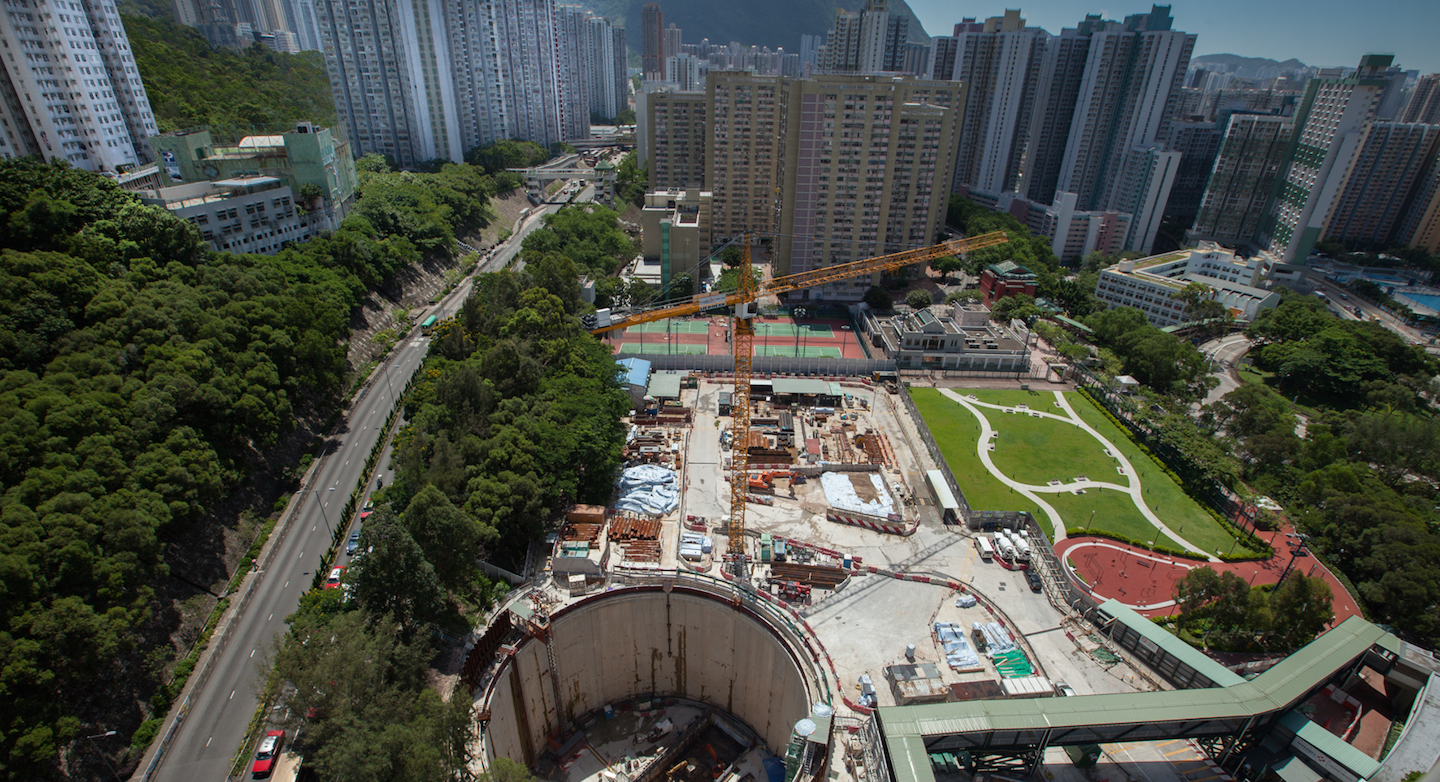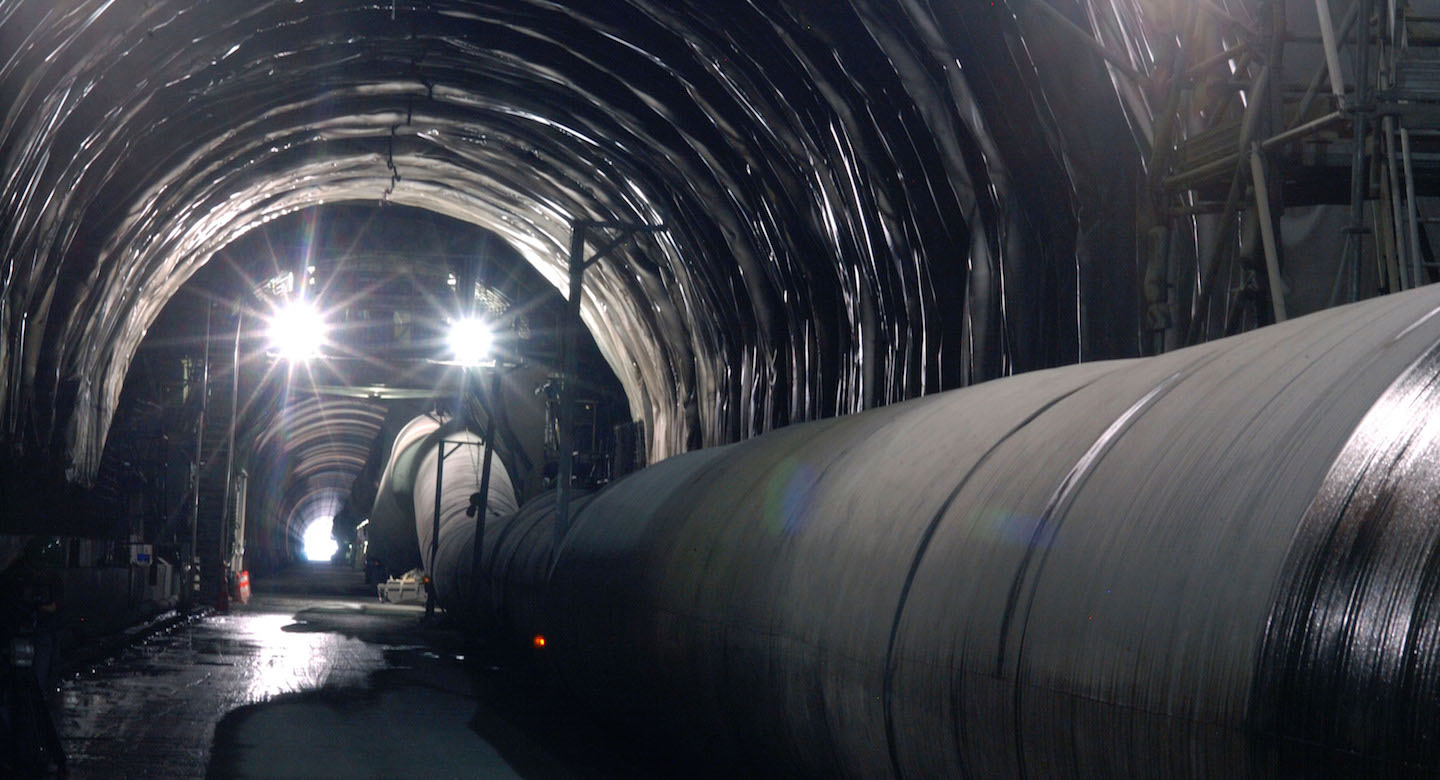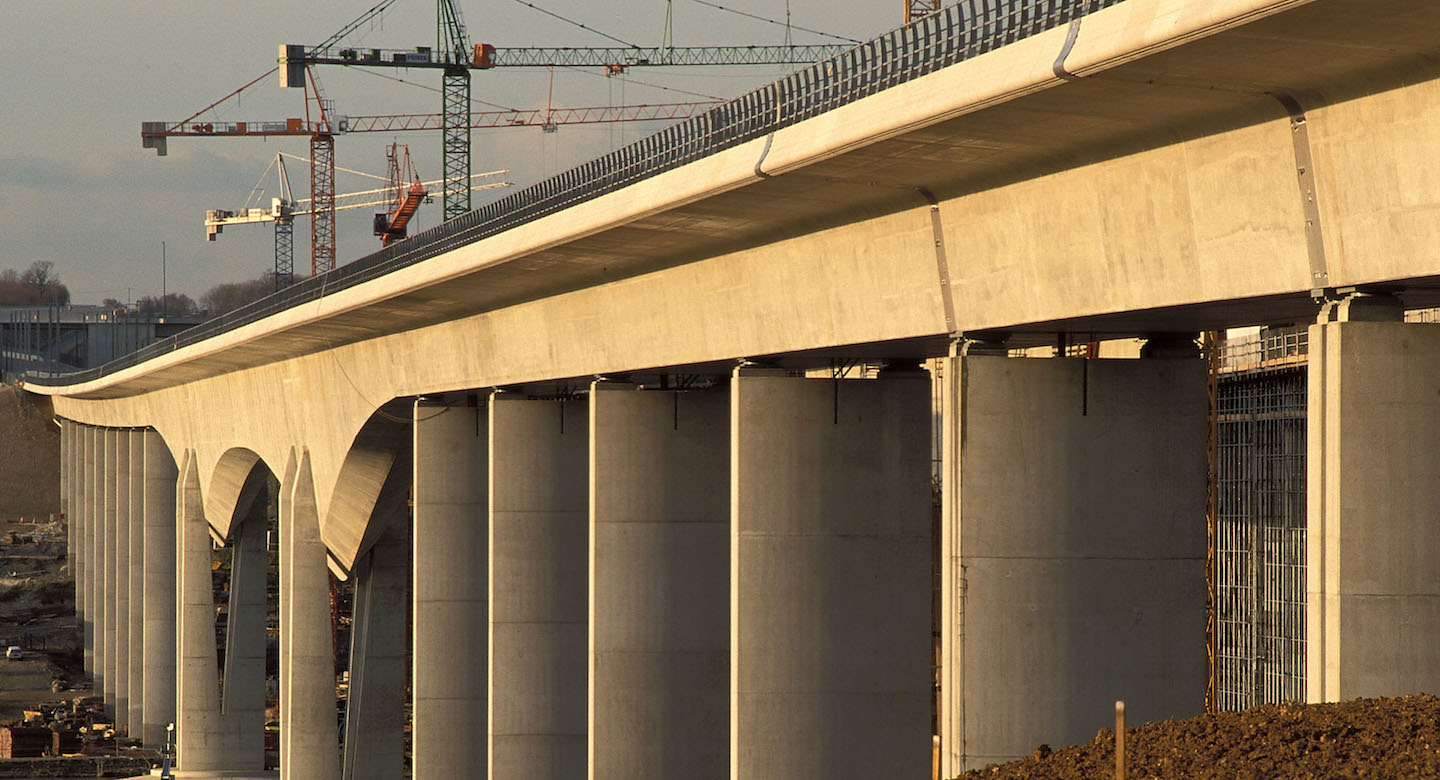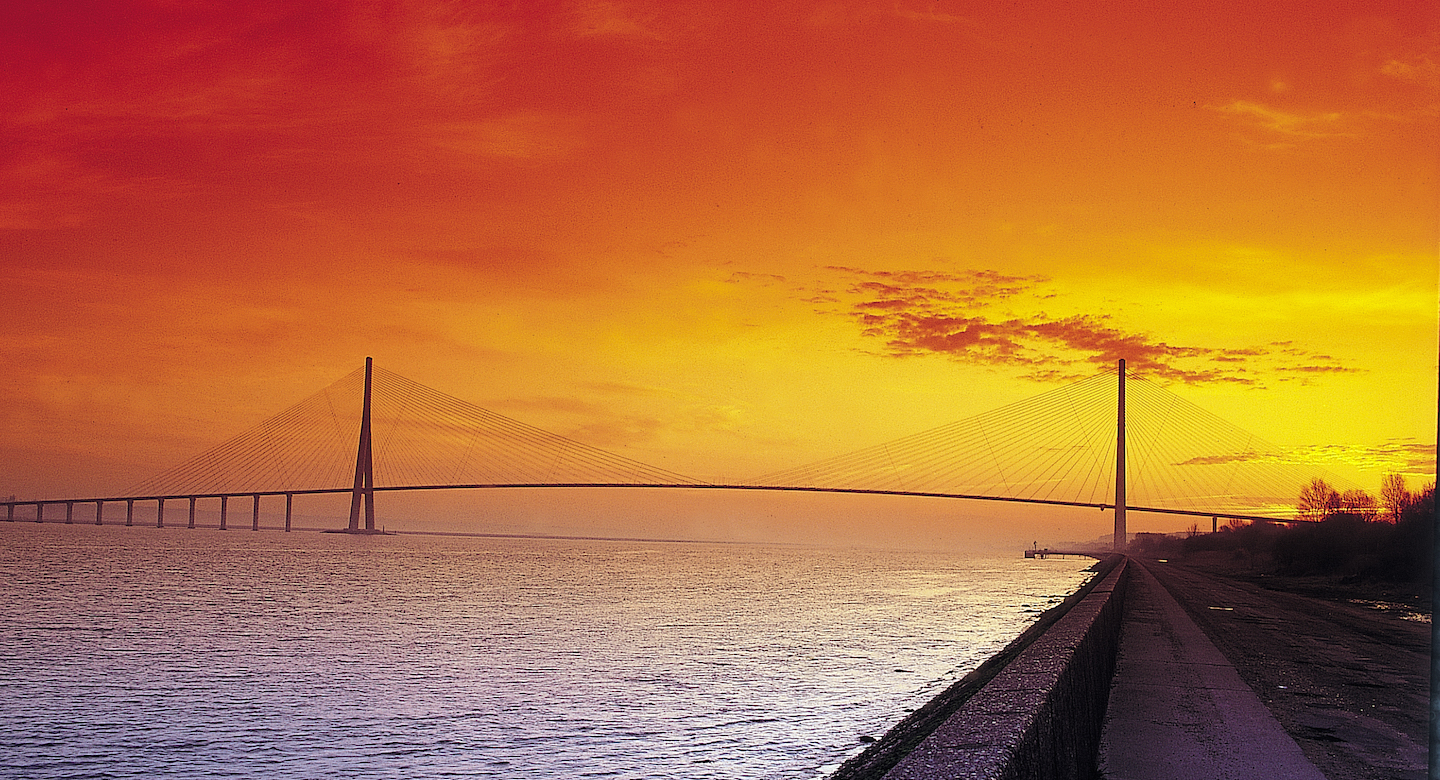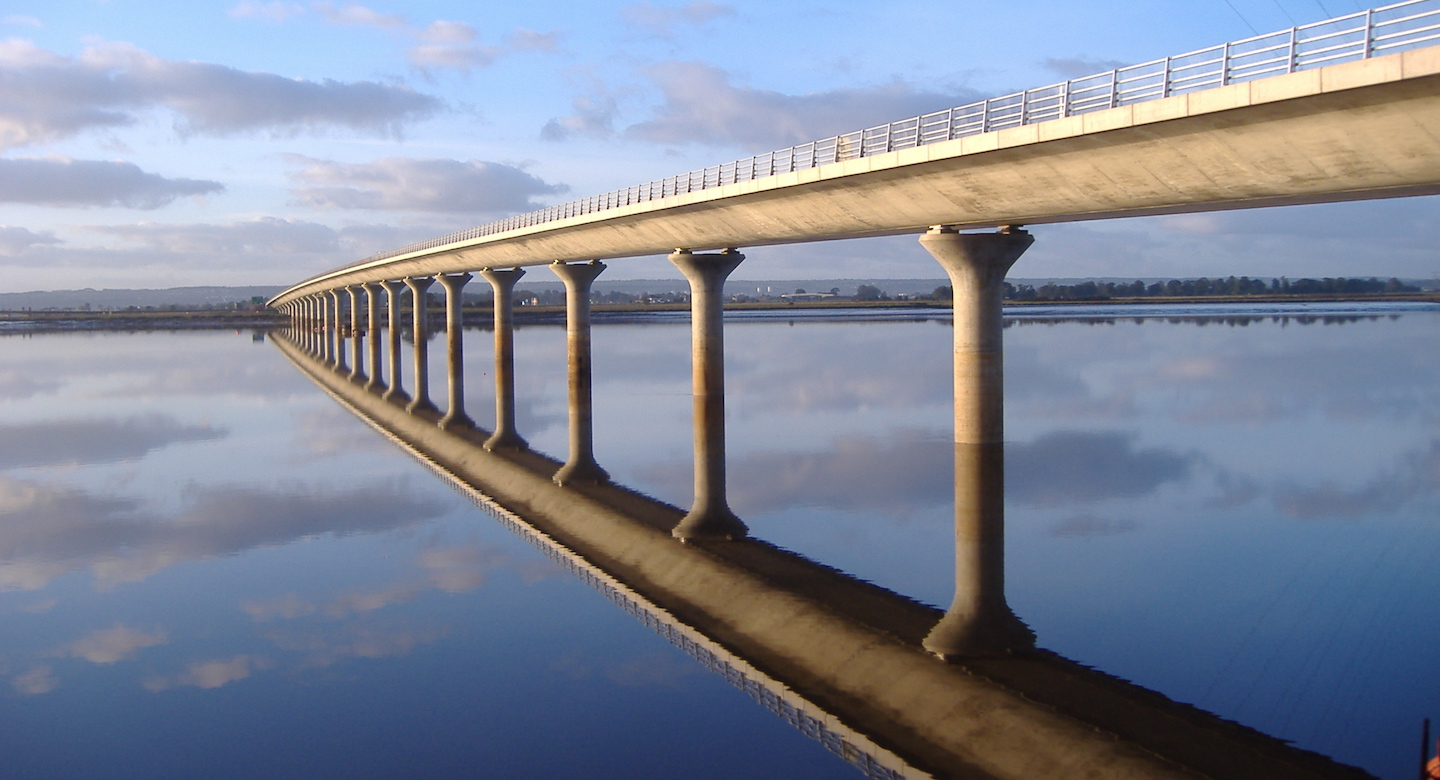Cruzar el río Severn para conectar Londres con Cardiff implicaba vencer a una de las mareas más altas del mundo. El uso intensivo de la prefabricación nos permitió controlar los grandes riesgos de este proyecto, consistente en el diseño, construcción y concesión de una obra de 5.126 metros que incluía un puente atirantado de 948 metros de longitud y 2 viaductos de acceso de 2.103 metros y 2.077 metros respectivamente.
La obra de 5.126 metros de longitud y 37 metros de altura libre atraviesa el estuario del Severn, 5 kilómetros río abajo del puente colgante existente. Dispone de 3 carriles de circulación y un arcén afirmado en cada sentido, separados por una mediana, y está equipado con barreras de seguridad y pantallas contra el viento laterales.
Tras participar hace más de 10 años en la construcción del metro de Hong Kong, entre 1998 y 2002, realizando los 5 túneles de Black Hill en el marco de la ampliación del metro hasta la ciudad nueva de Tseung Kwan O, MTR Corporation Limited (operador del metro de Hong Kong) encomendó a VINCI Construction Grands Projets la ejecución de 2 de los lotes de la nueva línea del metro SCL (Shatin to Central Link). El primero comprende la excavación de un túnel de 2.475 metros por voladura y de un túnel de dos tubos de 1.400 metros con tuneladora. El segundo lote incluye la excavación de un túnel de 700 metros por voladura.

Olympia Odos, a concession company led by VINCI Concessions, in association with the German company HOCHTIEF PPP Solutions and three Greek construction companies (Aktor Concessions, J&P-Avax, and Athena), has won the largest motorway-concession contract ever awarded in Greece. To achieve this major project successfully, the concession company subcontracted the infrastructure design and construction mandate to us. In efforts to improve traffic conditions in Greece, the country’s minister for infrastructure and transport appointed us to design, build, renovate, and operate (for a 30-year period) 202 kilometres of toll motorway linking Athens and Patras.
More specifically, the project called for designing, building, operating, and maintaining a new motorway with a dual 2-lane configuration between Corinth and Patras (120 km) and Patras and Tsakona (163.7 km) in the Peloponnese. The project also included upgrading, operating, and maintaining the existing dual 3-lane motorway connecting Elefsina to Corinth (64 km) as well as the Patras bypass (18.3 km).
The project was part of a construction initiative to build high-speed rail lines in Belgium, specifically between Brussels and the border with Germany: a distance of 147 kilometres, with the line going through Louvain and Liège.
On a 42-kilometre section of this line, VINCI Construction Grands Projets was mandated to build a tunnel more than 6 kilometres long between Chenée and Soumagne, close to the Chaudfontaine spa and about 10 kilometres from Liège.
The project covers more than 6.5 kilometres in total length and includes the 5.9-kilometre tunnel as well as two cut-and-cover trenches, 177 and 413 metres long, respectively. The two-way tunnel, which is sloped at 1.7%, includes a 110-m² excavated section.
This project covers the rail link to the tunnel below the English Channel, also known as High Speed 1 (HS1). This is the first high-speed rail line to be built in the United Kingdom. It is 108 kilometres long and connects the entrance to the Channel Tunnel (Chunnel) on the British side to London.
On this project, VINCI Construction Grands Projets was mandated by Union Railways Ltd to carry out 3 lots, including the construction of a single-tube tunnel 3 kilometres long, a bridge 1,255 metres long (including a 305-metre central span), a new section 13.8 kilometres long (including an incrementally launched bridge 1,025 metres long), two viaducts (675 and 454 metres, respectively), and 14 engineering structures of various kinds.
Joya de la industria de la construcción francesa de los años 90, esta obra dotada de múltiples tirantes de fijación une la ciudad de Havre con Honfleur. Este puente de 2 141 metros de longitud está compuesto por 1 350 metros de viaducto de acceso, un tramo central de 856 metros y 2 postes de 214 metros de altura que soportan el sistema de arriostrado. Con el paso de los años, este puente se ha convertido en un eje mayor de transporte y en una fuente de desarrollo regional.
El aumento constante de la densidad de tráfico en el puente de Kincardine dio lugar a una consulta pública con el fin de descongestionar el tráfico sobre el río Forth y alrededor de la pequeña ciudad de Kincardine-on-Forth. La solución propuesta por VINCI Construction Grands Projets fue construir un nuevo enlace al noroeste del puente existente, circunvalando de este modo la ciudad de Kincardine.
El consorcio construyó entonces un puente pretensado de 1.200 metros sobre el río Forth y realizó 5,3 kilómetros de carreteras, 3 nudos viarios así como 4 obras de construcción comunes.
La obra permite comunicar dos importantes ejes al norte y al sur del río para descongestionar el tráfico en la zona, situada a 40 kilómetros al noroeste de Edimburgo
The Sud Europe Atlantique high-speed rail line (LGV SEA) is the largest civil engineering project in Europe this decade and the most extensive railway infrastructure concession contract ever awarded in Europe. This 300-kilometre-plus project is designed to reduce travel time between Paris and Bordeaux by nearly an hour. VINCI Construction Grands Projets was part of the consortium in charge of designing and building this new rail line whose operation by private interests is set for a period of 50 years. This rail project required the building of more than 500 standard engineering structures along the 302-kilometre line, including 24 viaducts, 15 grade separations, and 7 cut-and-covers.
Considered one of the most important investments ever made in a French port, the purpose of Port 2000 was to double Le Havre’s container traffic (which had risen to 1.5 million units in 2000) by 2006.
In this national-scale project, VINCI Construction Grands Projet was approached to build a 6-km breakwater with two 55 m x 28 m x 20 m concrete caisson roundheads in a 13-m draught and a 4-km breakwater surrounding the reclamation area.
Naga Hammadi Dam, located 150 kilometres north of Luxor, is designed to replace an existing dam built early in the 20th century and provide irrigation to the Nile River Valley, regulate the flow of the river, and generate electrical power. This concrete gravity dam features two locks for river navigation and produces 64 megawatts of electricity thanks to four 16-megawatt turbines. To build Naga Hammadi, the Nile River had to be diverted for three years, and a total of 400,000 cubic metres of concrete was used at a monthly pace peaking at 30,000 cubic metres.



